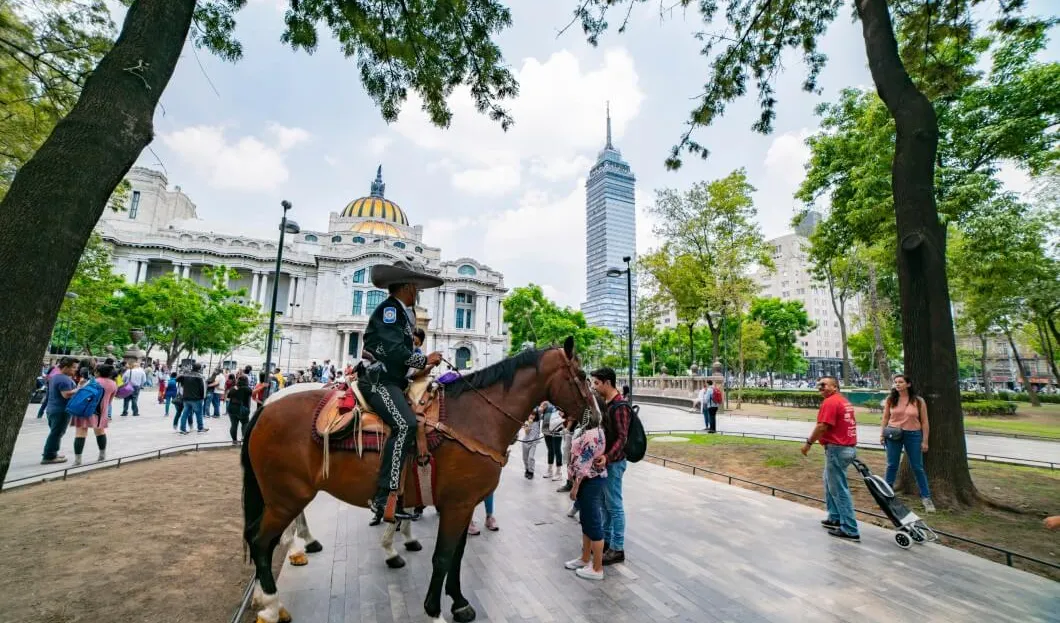
Despite the authorities' efforts to present an optimistic security outlook, negative perceptions regarding the current strategy are increasing and affecting Mexican tourism.
Tourism is one of the main economic activities in the country. Although the domestic market represents the main driver of this activity, since 82.1 pesos out of every 100 pesos consumed by tourists corresponds to domestic visitors and the remaining 17.9 pesos are spent by visitors from abroad, the international market is very important. It should be noted that 8 out of every 10 international tourists in Mexico are from the United States, so the sector has an important link with the dynamics of our northern neighbor.
One of the most affected sectors during the last two years was the tourism sector as a result of the pandemic. In 2020 alone there was a drop of 46% in international visits in comparison to 2019, in 2021 there was a drop of 29.2%. Before the pandemic, Mexican tourism accounted for 8.7% of the national GDP and although it currently represents 7.1%, it is foreseeable that these figures will improve as the sector is in a clear recovery.
The Ministry of Tourism (SECTUR) noted that Mexico is in second place among the countries that showed the greatest recovery during 1Q22, according to the UNWTO Tourism Barometer. The Organization places Mexico in second place in terms of earnings, 3.9% below the record obtained in the same period of 2019. It was surpassed by Turkey, a nation that is 17.4% above.
In this regard, Mexico surpassed countries such as France, Spain, Italy and Germany.
Miguel Torruco Marqués, head of Sectur, added that Mexico could reach between 55 and 70% of pre-pandemic levels in international tourist arrivals this year, based on the different analyses of the World Tourism Organization. Unfortunately, the ongoing violence in the country puts all positive trends at risk.
On June 13, the U.S. State Department published a document regarding the situation of crimes -such as homicides, kidnappings, car theft and robbery in general - in Mexican territory. The document is disturbingly long.
At first, there are five states to which it is simply advised "not to go": Colima, Guerrero, Michoacán, Sinaloa and Tamaulipas. Secondly, there are the 11 states to which it is advised to "reconsider" the trip due to the high risk: Baja California, Chihuahua, Coahuila, Durango, Guanajuato, Jalisco, State of Mexico, Morelos, Nayarit, Sonora and Zacatecas. Finally, there are 14 states listed as of "high caution" if interested in visiting them: Aguascalientes, Baja California Sur, Chiapas, Hidalgo, CDMX, Nuevo León, Oaxaca, Puebla, Querétaro, Quintana Roo, San Luis Potosí, Tabasco, Tlaxcala and Veracruz. Only two states in México are listed with normal conditions for traveling, Campeche and Yucatan.

Beyond the authorities' optimism, the negative perceptions regarding the security strategy in the country increase week after week. A simple glance at last week's news shows us the structural failures of the strategy: assaults on tourists in Cancun, damages to businesses in Chilpancingo, security operations in Michoacan, confrontations between criminals and law enforcement in Mexico City and armed intimidation of a large group of people in San Cristobal de las Casas, Chiapas.
The recent report published by the Mexican government serves as an example. Even when it is emphasized that "from the 94 homicides per day in January-May 2019, we are now at 84, which represents a reduction of 10.8% with respect to 2021” the economic effects resulting from violence or other criminal activities such as extortion, are increasingly serious.









